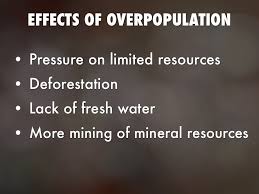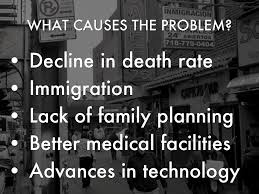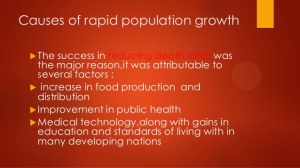As the century begins, natural resources are under increasing pressure, threatening public health and development. Water shortages, soil exhaustion, loss of forests, air and water pollution, and degradation of coastlines afflict many areas. As the world’s population grows, improving living standards without destroying the environment is a global challenge.
Most developed economies currently consume resources much faster than they can regenerate. Most developing countries with rapid population growth face the urgent need to improve living standards.
Environment getting worse:
In the past decade in every environmental sector, conditions have either failed to improve, or they are worsening:
- Public health:
Unclean water, along with poor sanitation, kills over 12 million people each year, most in developing countries. Air pollution kills nearly 3 million more. Heavy metals and other contaminants also cause widespread health problems.
- Food supply:
Will there be enough food to go around? In 64 of 105 developing countries studied by the UN Food and Agriculture Organization, the population has been growing faster than food supplies. Population pressures have degraded some 2 billion hectares of arable land — an area the size of Canada and the U.S.
- Freshwater:
The supply of freshwater is finite, but demand is soaring as population grows and use per capita rises. By 2025, when world population is projected to be 8 billion, 48 countries containing 3 billion people will face shortages. - Coastlines and oceans:
Half of all coastal ecosystems are pressured by high population densities and urban development. A tide of pollution is rising in the world’s seas. Ocean fisheries are being over exploited, and fish catches are down.
- Forests:
Nearly half of the world’s original forest cover has been lost, and each year another 16 million hectares are cut, bulldozed, or burned. Forests provide over US$400 billion to the world economy annually and are vital to maintaining healthy ecosystems. Yet, current demand for forest products may exceed the limit of sustainable consumption by 25%.
- Biodiversity:
The earth’s biological diversity is crucial to the continued vitality of agriculture and medicine — and perhaps even to life on earth itself. Yet human activities are pushing many thousands of plant and animal species into extinction. Two of every three species is estimated to be in decline. - Global climate change:
The earth’s surface is warming due to greenhouse gas emissions, largely from burning fossil fuels. If the global temperature rises as projected, sea levels would rise by several meters, causing widespread flooding. Global warming also could cause droughts and disrupt agriculture. -
Population and sustainable development
Environmentalists and economists increasingly agree that efforts to protect the environment and to achieve better living standards can be closely linked and are mutually reinforcing. Slowing the increase in population, especially in the face of rising per capita demand for natural resources, can take pressure off the environment and buy time to improve living standards on a sustainable basis.3,8,11,12
- As population growth slows, countries can invest more in education, health care, job creation, and other improvements that help boost living standards.11 In turn, as individual income, savings, and investment rise, more resources become available that can boost productivity. This dynamic process has been identified as one of the key reasons that the economies of many Asian countries grew rapidly between 1960 and 1990.5
- In recent years fertility has been falling in many developing countries and, as a result, annual world population growth has fallen to about 1.4% in 2000 compared with about 2% in 1960. The UN estimated recently that population is growing by about 78 million per year, down from about 90 million estimated early in the 1990s.10 Still, at the current pace world population increases by about 1 billion every 13 years. World population surpassed 6 billion in 1999 and is projected to rise to over 8 billion by 2025.
.- Globally, fertility has fallen by half since the 1960s, to about three children per woman.10 In 65 countries, including 9 in the developing world, fertility rates have fallen below replacement level of about two children per woman.9 Nonetheless, fertility is above replacement level in 123 countries, and in some countries it is substantially above replacement level. In these countries the population continues to increase rapidly. About 1.7 billion people live in 47 countries where the fertility rate averages between three and five children per woman. Another 730 million people live in 44 countries where the average woman has five children or more.7
- Almost all population growth is in the developing world. As a result of differences in population growth, Europe’s population will decline from 13% to 7% of world population over the next quarter century, while that of sub-Saharan Africa will rise from 10% to 17%. The shares of other regions are projected to remain about the same as today.6
- As population and demand for natural resources continue to grow, environmental limits will become increasingly apparent.6 Water shortages are expected to affect nearly 3 billion people in 2025, with sub-Saharan Africa worst affected.2 Many countries could avoid environmental crises if they took steps now to conserve and manage supplies and demand better, while slowing population growth by providing families and individuals with information and services needed to make informed choices about reproductive health.
- Family planning programs play a key role. When family planning information and services are widely available and accessible, couples are better able to achieve their fertility desires.4 “Even in adverse circumstance — low incomes, limited education, and few opportunities for women — family planning programs have meant slower population growth and improved family welfare,” the World Bank has noted.1






